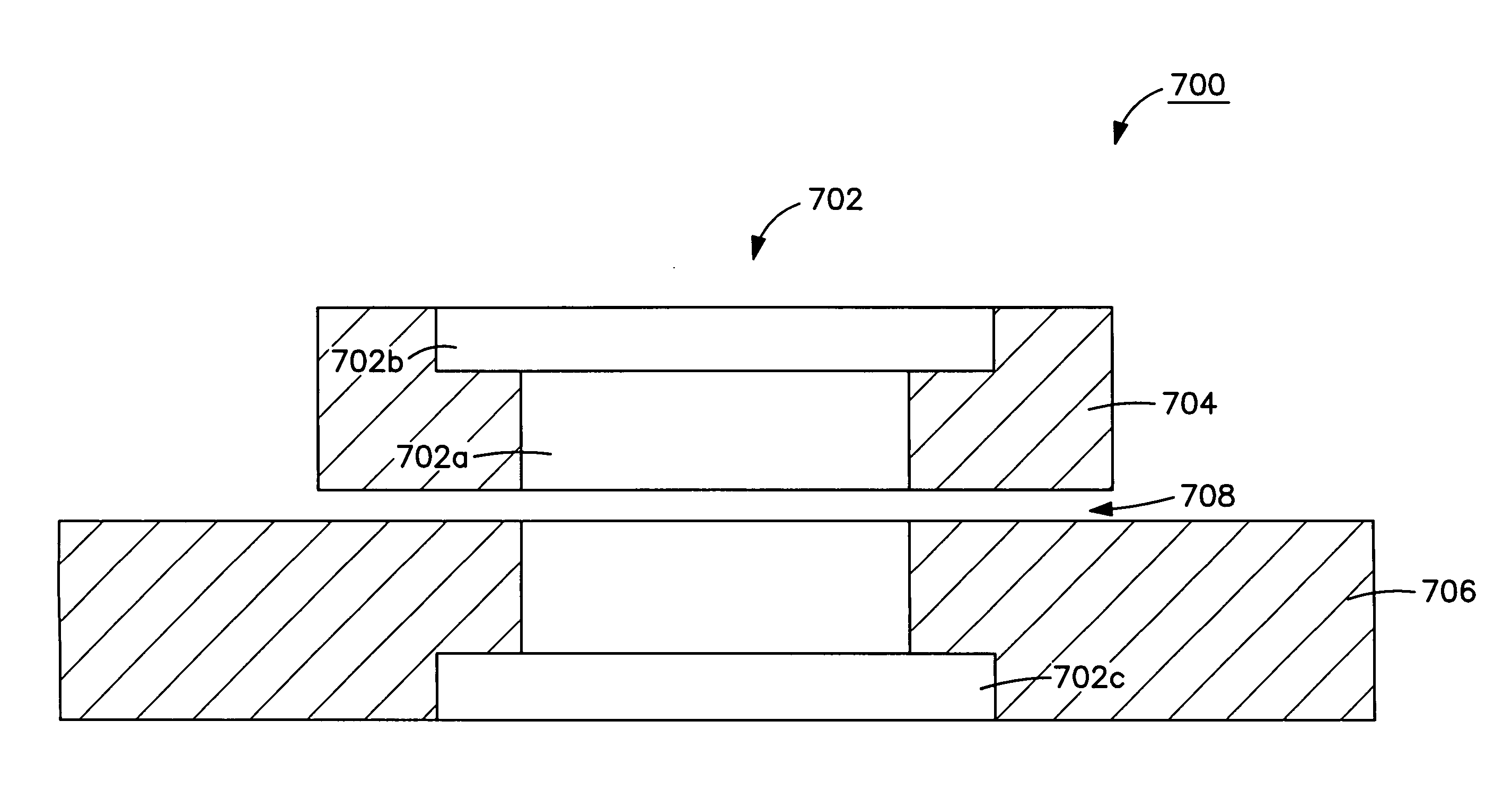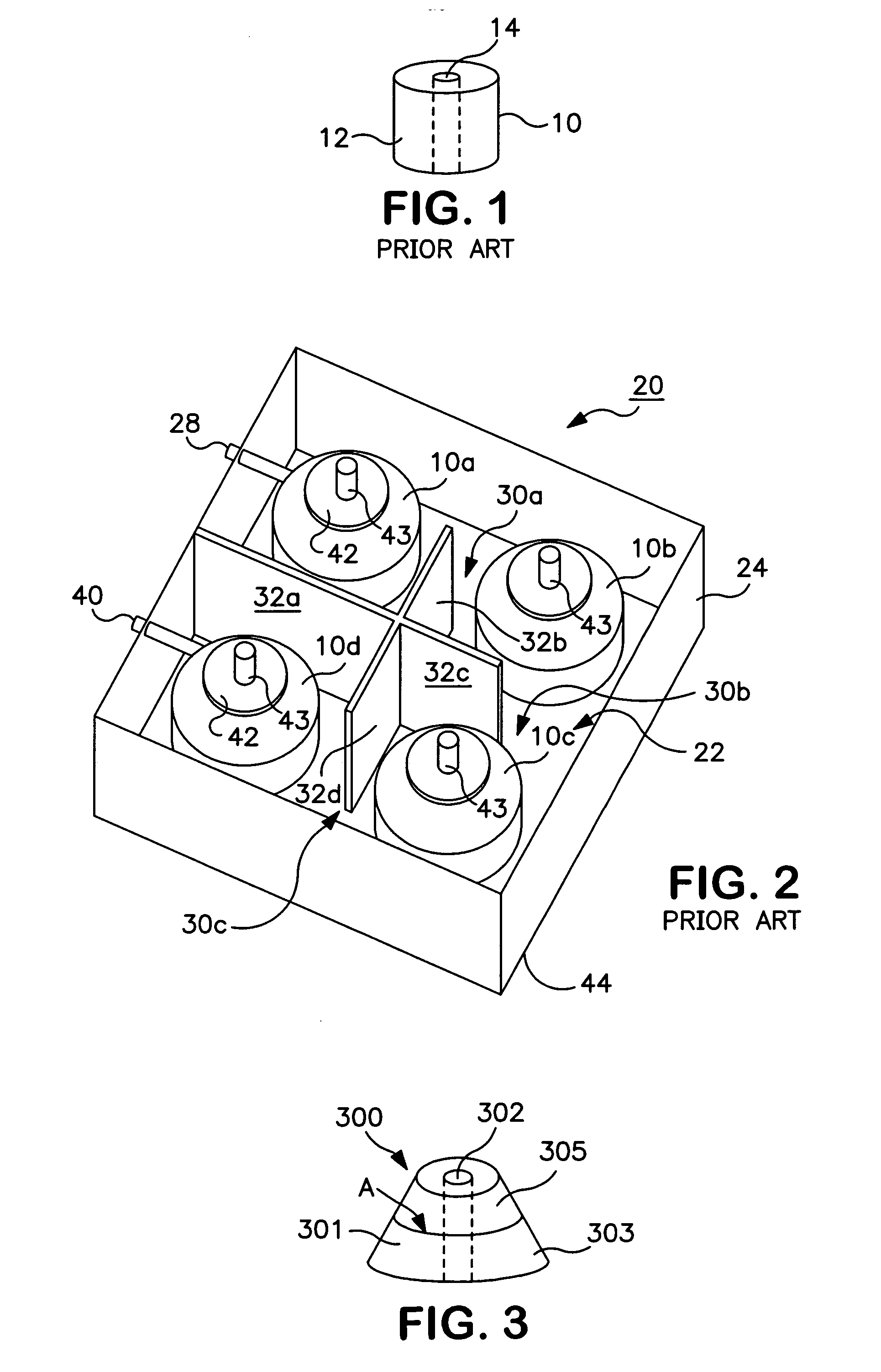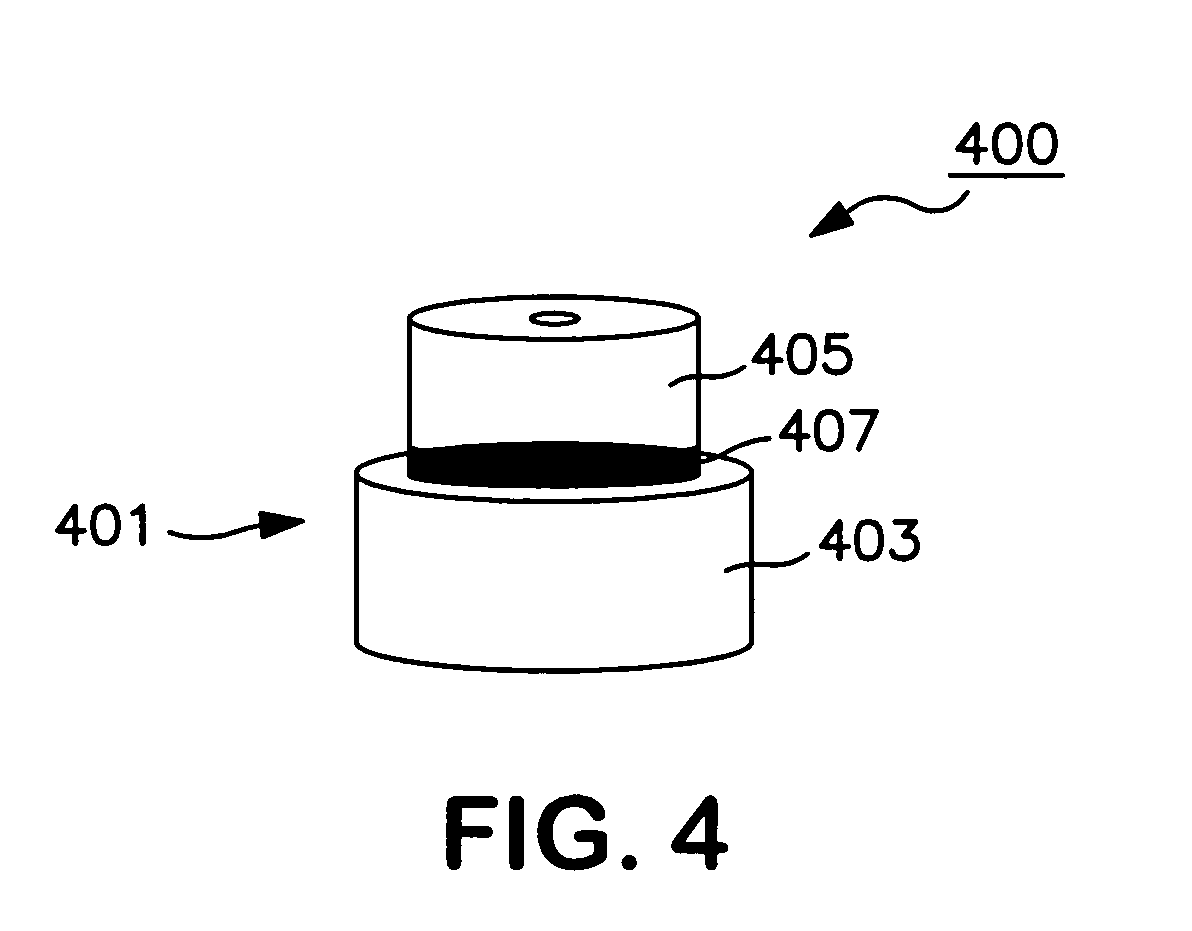Dielectric resonators with axial gaps and circuits with such dielectric resonators
a dielectric resonator and axial gap technology, applied in the direction of resonators, basic electric elements, waveguide devices, etc., can solve the problems of essentially impossible to build an effective dielectric resonator circuit, huge spurious response, and become extremely difficult to tune such filters and other circuits, so as to improve spurious response, improve mode separation and spurious response, and improve the effect of spurious respons
- Summary
- Abstract
- Description
- Claims
- Application Information
AI Technical Summary
Benefits of technology
Problems solved by technology
Method used
Image
Examples
Embodiment Construction
[0025] U.S. patent application Ser. No. 10 / 268,415, which is fully incorporated herein by reference, discloses new dielectric resonators as well as circuits using such resonators. One of the primary advantages of the new resonators disclosed in the aforementioned patent application is that the field strength of the TE mode field outside of and adjacent the resonator varies along the longitudinal dimension of the resonator. A key feature of these new resonators that helps achieve this goal is that the cross-sectional area of the resonator measured parallel to the field lines of the TE mode varies along the axial direction of the resonator, i.e., perpendicularly to the TE mode field lines. In one embodiment, the cross-section varies monotonically as a function of the longitudinal dimension of the resonator, i.e., the cross-section of the resonator changes in only one direction (or remains the same) as a function of height. In one preferred embodiment, the resonator is conical, as disc...
PUM
 Login to View More
Login to View More Abstract
Description
Claims
Application Information
 Login to View More
Login to View More - R&D
- Intellectual Property
- Life Sciences
- Materials
- Tech Scout
- Unparalleled Data Quality
- Higher Quality Content
- 60% Fewer Hallucinations
Browse by: Latest US Patents, China's latest patents, Technical Efficacy Thesaurus, Application Domain, Technology Topic, Popular Technical Reports.
© 2025 PatSnap. All rights reserved.Legal|Privacy policy|Modern Slavery Act Transparency Statement|Sitemap|About US| Contact US: help@patsnap.com



